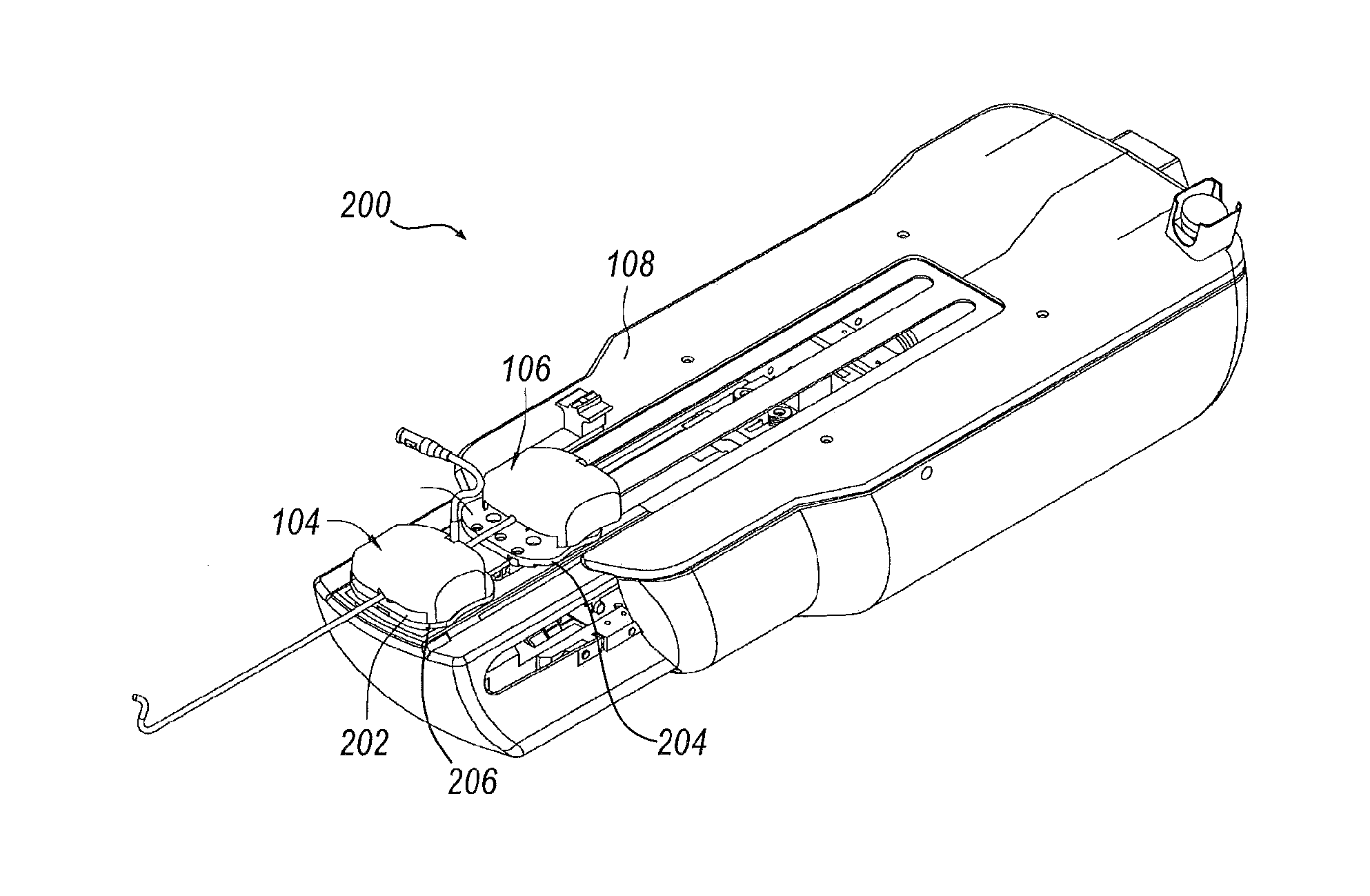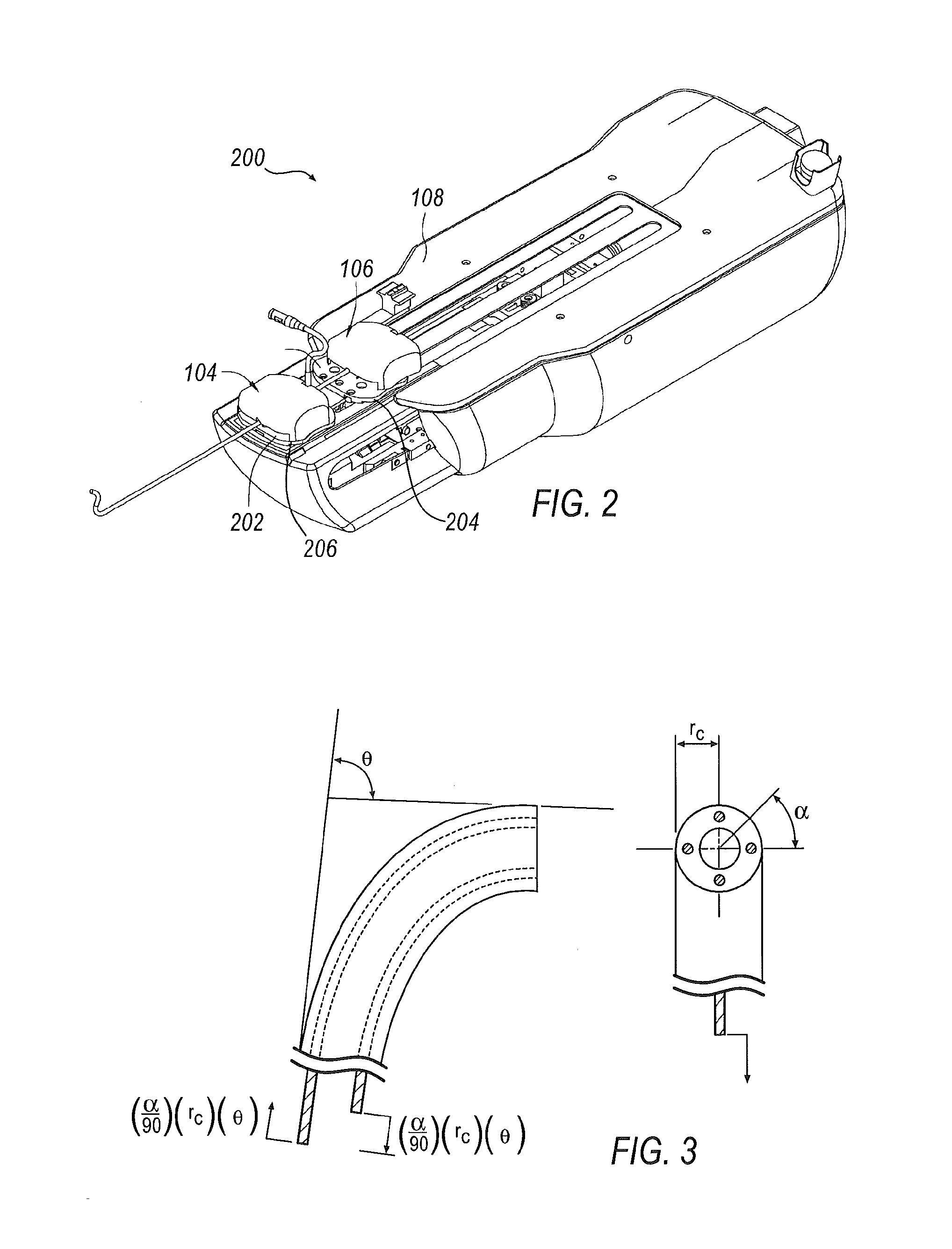Torque-based catheter articulation
a technology of torque-based catheters and catheter articulation, which is applied in the field of robotic surgical systems, can solve the problems of unanticipated or un-modeled constraints on the patient's part, and the catheter's calculated motion does not match the actual motion precisely
- Summary
- Abstract
- Description
- Claims
- Application Information
AI Technical Summary
Benefits of technology
Problems solved by technology
Method used
Image
Examples
Embodiment Construction
[0022]Referring now to the discussion that follows and also to the drawings, illustrative approaches to the disclosed assemblies are shown in detail. Although the drawings represent some possible approaches, the drawings are not necessarily to scale and certain features may be exaggerated, removed, or partially sectioned to better illustrate and explain the present disclosure. Further, the descriptions set forth herein are not intended to be exhaustive or otherwise limit or restrict the claims to the precise forms and configurations shown in the drawings and disclosed in the following detailed description.
[0023]Referring to FIG. 1, a robotic surgical system 100 is illustrated in which an apparatus, a system, and / or method may be implemented according to various exemplary illustrations. System 100 may include a robotic catheter assembly 102 having a sheath instrument 104 and / or a catheter instrument 106. Catheter assembly 102 is controllable using a robotic instrument driver 108 (gen...
PUM
 Login to View More
Login to View More Abstract
Description
Claims
Application Information
 Login to View More
Login to View More - R&D
- Intellectual Property
- Life Sciences
- Materials
- Tech Scout
- Unparalleled Data Quality
- Higher Quality Content
- 60% Fewer Hallucinations
Browse by: Latest US Patents, China's latest patents, Technical Efficacy Thesaurus, Application Domain, Technology Topic, Popular Technical Reports.
© 2025 PatSnap. All rights reserved.Legal|Privacy policy|Modern Slavery Act Transparency Statement|Sitemap|About US| Contact US: help@patsnap.com



